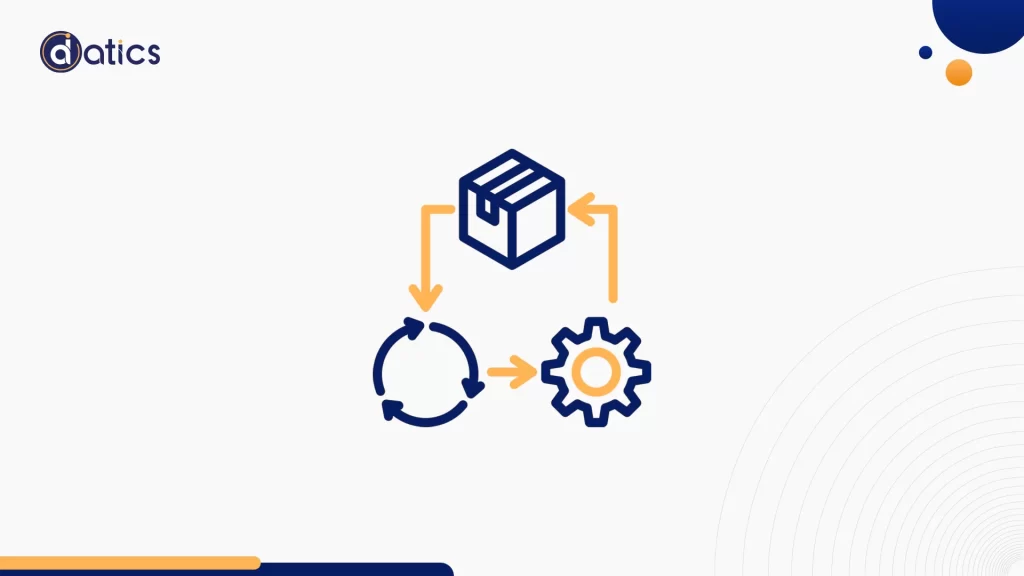
© 2024 | All Right Revered.
Understanding the intricate process and core concept of a software development life cycle.

Founder & CEO | Datics AI
A data scientist turned entrepreneur, on a mission to revolutionize tech ecosystem and empower companies in their digital transformation journey.

In today’s digital era, software lies at the heart of our everyday experiences, from navigating smart devices to complex systems like self-driving cars. Behind these innovations lies a structured process known as the Software Product Development Life Cycle (SDLC). This guide aims to walk you through the fundamental aspects of SDLC, offering insights into its phases and significance.
Software Product Development encompasses the process of conceiving, designing, and sustaining software applications or systems. This method systematically tailors software solutions to meet distinct user needs.

For businesses striving to deliver top-notch products, proficient software development holds immense significance. It guarantees the construction of resilient, user-centric, and adaptable software solutions that align with both business and end-user demands.
The Software Product Development Life Cycle serves as a structured roadmap governing the creation and upkeep of software products. Comprising various phases, it ensures a methodical and streamlined approach to software development.

Any software’s start lies in Requirement Gathering, a foundational step collecting and documenting business and user needs meticulously. Establishing clear communication channels ensures a comprehensive grasp of project goals. This phase acts as a guiding compass throughout the development journey.
Once the requirements are gathered, attention turns to the Design and Prototyping phase. This stage transforms collected information into tangible design plans, focusing on turning ideas into structured designs. Meticulously crafted prototypes or Minimum Viable Products (MVPs) act as tangible representations for practical testing and validation. Think of this phase as akin to sketching out an architectural blueprint before building—a crucial step to ensure the solidity of the final product.
The Software Development phase is at the heart of the entire cycle. This is where the real action occurs—the coding and development of the software come alive. Developers, equipped with design documentation, dive into the complex task of turning visions into functional reality. Following established guidelines and best practices, this phase sets the foundation for the software’s functionality and structure.
After development, thorough Testing becomes crucial. It involves an extensive evaluation process to guarantee the software meets strict quality standards. Different tests—functional, performance, security, and usability—are conducted meticulously. Each test examines various aspects to ensure the software’s strength, effectiveness, and user-friendliness. This phase serves as a gatekeeper, permitting only flawless, error-free software to advance.
After successfully completing the testing phase, the software is set for Deployment. This crucial step shifts the software from development setups to the live production environment for end-users. Prioritizing tasks like setting up servers, establishing Continuous Integration/Continuous Deployment (CI/CD) pipelines, and careful deployment planning is essential. This phase acts as the link between creation and use, ensuring a smooth transition into the users’ hands.
Following deployment, the process evolves into an ongoing Maintenance and Operations cycle. Continuous maintenance is crucial for bug fixes, integrating new features, and adapting to evolving user needs. This phase highlights the significance of maintaining excellence, ensuring the software stays efficient, current, and aligned with user expectations.
In summary, the Software Product Development Life Cycle involves a structured journey from conception to deployment and further. Each phase serves as a pivotal element in crafting successful software products. Understanding and methodically navigating these stages create the foundation for efficient, top-quality software solutions that fulfill and surpass user needs.

Following the Software Product Development Life Cycle (SDLC) doesn’t just make processes smoother; it guarantees Predictability and Transparency in project results. Predictability is key, offering a clear path for project advancement. Stakeholders acquire visibility into project milestones, schedules, and deliverables, promoting transparency and trust among all participants. This transparency facilitates informed decision-making, improving overall project management and establishing a sense of dependability.
The SDLC significantly contributes to Risk Management and Cost Efficiency during software development. Early recognition and handling of risks are vital in SDLC. By tackling potential obstacles early on, SDLC notably cuts down the chances of exceeding budgets and project mishaps. This proactive strategy acts as a protective measure, securing project viability and ensuring resource efficiency, ultimately enhancing cost-effectiveness.
SDLC strives for Improved Quality and User Satisfaction as a core objective. Its systematic process—from gathering requirements to testing and deployment—aims to provide top-notch software that surpasses user expectations.
By carefully handling user needs and rigorous testing, SDLC focuses on creating software that not only works flawlessly but also perfectly matches user requirements. This dedication to quality and user-oriented development nurtures satisfaction and trust among users, leading to their continued support and loyalty.
SDLC strives for Improved Quality and User Satisfaction as a core objective. Its systematic process—from gathering requirements to testing and deployment—aims to provide top-notch software that surpasses user expectations.
By carefully handling user needs and rigorous testing, SDLC focuses on creating software that not only works flawlessly but also perfectly matches user requirements. This dedication to quality and user-oriented development nurtures satisfaction and trust among users, leading to their continued support and loyalty.
SDLC extends beyond deployment, enabling Continuous Improvement. After deployment, ongoing cycles of maintenance and updates allow for enhancements and optimizations. Feedback mechanisms within SDLC facilitate continuous refinement and evolution of the software. This iterative method ensures the software stays relevant, efficient, and competitive in a changing landscape, meeting evolving user preferences and industry standards.
In essence, the Software Product Development Life Cycle isn’t merely a framework; it’s a strategic approach ensuring not only successful software creation and deployment but also its continuous evolution and user-focus. Following SDLC principles guarantees predictability, risk reduction, improved quality, and fosters a culture of continuous improvement. Ultimately, this shapes software products towards excellence and sustained success.
SDLC involves diverse models, each with unique approaches while sharing core steps and activities.

The oldest SDLC method, the waterfall model, follows a linear path. It requires completing each phase before proceeding to the next. Information flows from one stage to the next, reducing potential recurring issues. However, its vulnerability to early delays can pose challenges for future project timelines.
Advantages
Disadvantages

Like the waterfall model, the V-shaped model involves testing in every development phase, enhancing bug detection and control. Its systematic and disciplined approach suits smaller projects with well-defined requirements, focusing on delivering top-quality results.
Advantages
Disadvantages

The prototype model precedes software development, crafting an initial version for user input. While less functional than the final product, prototypes are vital for comprehending and meeting customer needs.
Advantages
Disadvantages

With its focus on iterations and prototypes, the spiral model emphasizes risk analysis and gradual progress. It operates through cycles representing different SDLC phases, enabling continuous refinement and adaptation.
Advantages
Disadvantages

The iterative model divides products into manageable parts, addressing features in each step without exhaustive planning. Its incremental approach enables early defect detection and simplifies management.
Advantages
Disadvantages

The Big Bang model operates without a defined process, focusing on rapid development based on the developer’s comprehension. It’s suitable for small projects but lacks formal testing, increasing the risk of project failure.
Advantages
Disadvantages

The Agile model prioritizes flexibility over strict requirements, highlighting incremental builds and customer feedback in short iterations (sprints). Its goal is to adapt to changes and evolving customer needs.
Advantages
Disadvantages
In software development, choosing the right methodology is crucial. Each discussed model offers a unique framework tailored to specific project requirements. From structured approaches like Waterfall and V-Shaped models to the adaptable and client-focused Agile methodology, adaptability is key. Understanding these models enables teams to choose the best fit for their projects. Embracing these methods goes beyond streamlining processes; it shapes the software creation journey, ensuring successful delivery and nurturing a culture of ongoing enhancement and user contentment.
At Datics AI, we have skilled resources who offer a straightforward product development process that makes deployment and migration easier.
Share the details of your project – like scope, timeframe, or business challenges. Our team will carefully review them and get back to you with the next steps!

© 2024 | All Right Revered.
This guide is your roadmap to success! We’ll walk you, step-by-step, through the process of transforming your vision into a project with a clear purpose, target audience, and winning features.